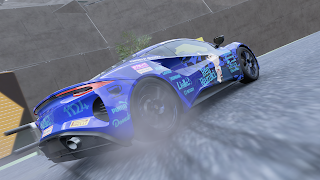Polestar has done the impossible with the first-ever Polestar 4, an all-electric coupe crossover with no rear window. How is this possible? Is it legal to drive a car without a rear window?
 |
| 2025 Polestar 4 |
The 700,000Kr Polestar 4 is unlike every road car you've come across since the days of the Gumpert Apollo because like the Apollo, the Polestar 4 has no rear view window. Verging suicidal by Polestar standards, the liftback styling and signature Polestar styling first seen in the Polestar 3 SUV really means business for the Swedish EV premium brand under the thumb of China's Geely group.
 |
| 2025 Polestar 4 interior |
Inside, the Polestar 4 accommodates up to five people but because of such luxury car pricing, it's too expensive to be used as a family car, perhaps it can be used for business class purposes, escorting big shots from Peking to Paris. Because it doesn't have a rear mirror, the only way to see things behind you is by using the 15.4-inch touch screen with Google built-in and Snapdragon Cockpit Platform. It's the future, after all.
Powered by a 102kWh battery pack, the RWD Long Range Single Motor variant produces 272PS of power while the AWD Long Range Dual Motor variant produces 544PS of power, sprinting from 0-100kph in 3.8 seconds and a top speed of 200kph. As for the driving range, the latter does 590km on one full charge.
The Polestar 4 is packed with numerous safety features that earned the right to become fully autonomous in the foreseeable future, with Level 2 autonomy the best it can do for now. It even comes with the Polestar-first Smart Eye that detects drivers' eye movements in the name of reducing driver distraction.
 |
| 2025 Lotus Emeya |
Feeling nervous about driving a car with no rearview mirror like the Polestar 4 should be better off with the more expensive choice; the Lotus Emeya, the first all-electric premium sedan from the company behind lightweight sports cars such as the Elise, Exige, and the Evora.
 |
| 2025 Lotus Emeya interior |
Priced at 89,500 Pounds plus additional costs, the Emeya is more expensive than the no-rear-window Polestar 4 and has one seat less compared to the said car but with all the downsides come with the added upsides because, unlike the Eletre SUV, this is a lot more interesting to drive.
Like the Eletre SUV, the Emeya sedan is powered by dual motors that power it and the Geely-derived platform underneath. Although it doesn't behave like a Lotus, it delivers a throat-chopping experience when you put your foot down and looks like someone's driven to tears, wishing they want to experience this someday.
The Emeya features three different configurations with the base variant producing 612PS of power and 373 miles of driving range to the ultra-powerful Eletre R with a monstrous 918PS of power output, capable of going from 0-60mph in 4.2 seconds and has a top speed of 278kph. As for the range, the Eletre R is good for 485km on one full charge.
It also features the most sophisticated ADAS offered such as the LIDAR system, ultra-HD cameras, and millimeter-wave radar, making it equipped for fully autonomous driving.
The Polestar 4 is an all-electric coupe crossover with no rear window, while the Lotus Emeya is an all-electric premium sedan. Both cars have pros and cons. The Polestar 4 is less expensive but doesn't have a rear window, while the Lotus Emeya is more expensive but has a rear window. If I had to choose, I would go for the Lotus.
Photo: Polestar, Lotus


















































.png)
.png)
.png)
.png)
.png)
.png)
.png)